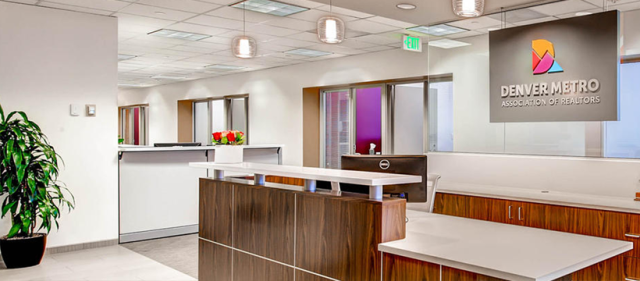Colorado’s First Zero-Energy Neighborhood is Here
It may sound like a news headline from the future, but the future is here. Arvada is now home to the Geos Neighborhood, a community which is fully powered by renewable energy harnessed on-site.
It may sound like a news headline from the future, but the future is here. Arvada is now home to the Geos Neighborhood, a community which is fully powered by renewable energy harnessed on-site.
The Home Energy Rating System (HERS) Index gives buildings that produce their own energy a HERS score of zero; these homes may be called “zero-energy” or “net-zero” buildings. Every home in the Geos Neighborhood is not only designed to meet this requirement, but they actually produce more energy than needed, which means they are “energy-plus” homes. A Geos resident might not even need to purchase gas for their car anymore.
Boasting the title of first fully net-zero community in the state is impressive enough, but by the time the 25 acre development is complete, it will also claim the title of largest mixed-use net-zero community in the country. The project’s developers, Cornerstone Homes, attribute their success to a fearlessness to take on ambitious projects that other developers are hesitant to pursue. “It’s not a challenge to build a net-zero home; the challenge is building a net-zero home that is affordable to buyers,” explains Casey Van Iten, Project Manager of Cornerstone Homes. Built using the most advanced practices in sustainable design, it is astonishing that some Geos homes have a price point as low as $390,000.
The secret to building a self-sustaining home is to work with the elements rather than against them. Each home must be custom designed based on the land it occupies. A net-zero design must be clever enough to avoid wasteful pitfalls while utilizing the opportunities surrounding it.
There are several contributing factors to the super-efficient design of the Geos Neighborhood:
Passive Solar
One of the first things the master planner will consider is the position of the home in relation to the sun. Proper consideration to solar exposure can make a home up to 15 - 20 percent more efficient. By optimizing for sun-bathed windows in the winter and shaded windows in the summer, the internal temperature of the house needs less correcting. Proper consideration of sunlight also means these homes are well lit and require less energy to illuminate (LED lighting also contributes to cost savings).
Geothermal Heating and Cooling
Of course, some climate control will still be necessary, but there are ways to maximize efficiency for this, as well. Geothermal climate control involves utilizing ground temperatures to maintain a comfortable atmosphere inside the home. To do this, a well is drilled into the earth where temperatures are 55-65 degrees year round. From here, water can be cooled or heated to this temperature and then assist in the adjustment of the home climate. A home using geothermal technology may only need adjustments of about 10 degrees. This technology and all other appliances in the home are Energy Star certified.
High-Performance Shell
With high tech foam insulation and triple panned windows meticulously installed, a Geos house is able to reduce its natural air change per hour to an astonishing 0.04. This means under normal circumstances, only four percent of the air is leaked from the building per hour. For further energy savings, the home uses energy recovery ventilation. Because of the air tightness of the homes, volatile organic compounds are prohibited in the building materials.
Civic Stormwater Management
Although water conservation is not factored into HERS scoring, the developers are passionate about environmental sustainability and factored water use into their designs. In the Geos Neighborhood, stormwater is redirected to irrigate the community’s plant life. The landscape includes street tree rain gardens, community gardens, fruit trees and percolation parks. Trees are also placed thoughtfully to contribute to passive solar design.
Community Stewardship
An integrated community is not only good for the individuals living in this neighborhood, it is also helpful for energy conservation. A close-knit community is helpful for minimizing the usage of motor vehicles. The neighborhood includes a mixed-use main street, which has ground floor shops and office space with residential living above. Geos residents will have access to essential neighborhood services such as health and beauty care, financial and tax consulting, education and art studios. No more driving to yoga!
40 percent of energy in the US is consumed by buildings. Imagine the impact net-zero design could have on our ecological footprint. Plus, by denying the use of fossil fuels, we can help preserve an ecosystem that is hospitable to life. There is a push happening for this kind of efficient living. California has already mandated that all new residential buildings must be zero net energy by 2020. Many developers are worried about the impending regulation, but the Geos Neighborhood is proving that not only can it be done, it can be done quite well.
Be sure to attend our next YPN Connect event for more in-depth information on helpful and interesting topics like this.



